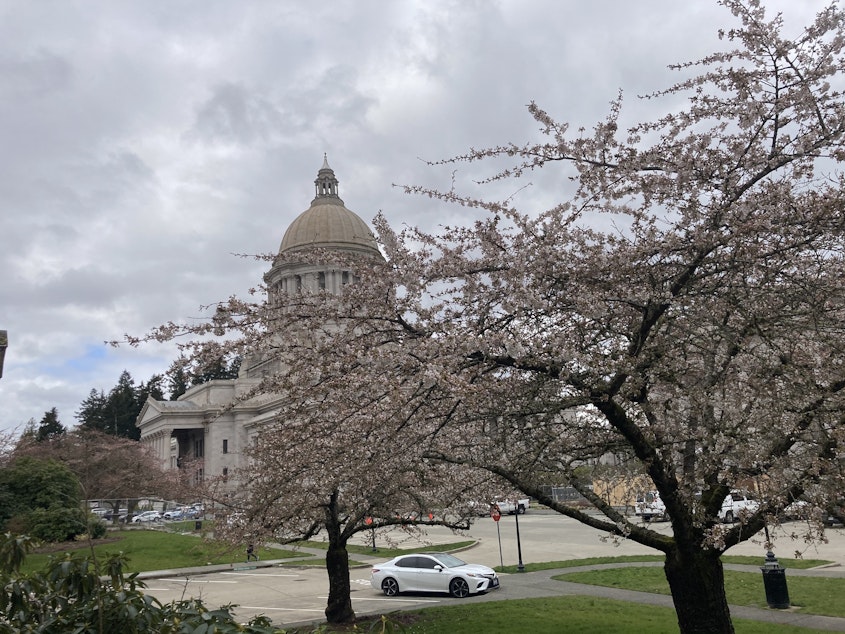WA Senate Democrats unveil budget proposal; includes big boost in spending, capital gains tax

A new state capital gains tax. An expanded and fully funded tax credit for lower-income families. Fresh investments in disaster preparation and foundational public health. And significant new spending in early learning and child care.
Those are among the elements of a proposed $59.2 billion, two-year budget Washington Senate Democrats unveiled on Thursday.
In addition, the proposal would spend approximately $7 billion in one-time federal funds from the recently passed American Rescue Plan. And tap the state’s $1.8 billion “rainy day” fund.
The Senate blueprint represents a 12 percent increase in state spending over the current biennial operating budget – nearly 15 percent when the federal funds are included. Senate Democrats say the plan aims to address inequities and vulnerabilities exposed by the pandemic.
“Everywhere you look in this budget, we have seized the opportunity to build a stronger, more equitable state. This is an ambitious set of priorities that will guide a sustainable recovery,” said state Sen. Christine Rolfes, the Democratic chair of the Senate Ways and Means Committee, in a statement.
Even before the budget was officially released, Senate Republicans were denouncing Democrats for resorting to a capital gains tax.
“State government’s revenue situation offers zero justification for new taxes,” said a statement from state Sen. Lynda Wilson, the ranking Republican on the Ways and Means Committee. Instead, Republicans are calling for sweeping tax relief, including a repeal of the state’s business and occupation tax. They would offset some of the lost revenue by applying the sales tax to legal services.
Surprisingly, Washington finds itself in a strong fiscal position despite COVID-19, a national recession and waves of layoffs and business closures. Projected state revenues have rebounded to pre-pandemic levels, giving budget writers $4.3 billion more to work with as compared to the previous two-year budget.
But that doesn’t tell the whole story. Once the “rainy day” fund and the federal money is factored in, the amount of available additional dollars swells to $13 billion -- although most of that is one-time money that Senate Democrats would spend on one-time priorities.
It’s a night-and-day contrast to the Great Recession more than a decade ago when revenues were in freefall and the budget was slashed. This year, majority Democrats, including Gov. Jay Inslee, have shunned the idea of an austerity budget. Instead, they're taking an approach that embraces a jolt of new and higher spending as a way to speed the recovery, shore up basic government functions and expand access to state services and programs.
“Our budget is balanced through four years and in the second biennium the growth is much more what you would expect to see,” Rolfes, the Senate budget chair, said in a briefing. “But the boost [in spending] right now is because we have the resources to help get people back on their feet, so that’s really what it’s all about.”
Among the top spending items in the Senate budget are:$1.7 billion in federal grants to help schools reopen and address student learning loss$1 billion in federal funds to expand access to vaccines and continue the pandemic response$850 million in federal money for affordable housing and homelessness$450 million in state and federal funds to fund the Fair Start for Kids Act aimed at expanding access to affordable early learning and child care$300 million for Immigrant Relief Fund payments to individuals$268 million to expand and fund, for the first time, the Working Families Tax Credit$170 million to expand access to behavioral health services, including through higher Medicaid rates$125 million to address wildfire risk$100 million to reduce the cost of individual health insurance plans sold on the state’s Health Benefit Exchange$26 million to fund a new Office in Internal Investigations to investigate cases of police deadly force
While the Senate budget relies, in part, on a new state capital gains tax on earnings over $250,000, it doesn’t include a new tax on health care premiums to fund public health, as proposed by Inslee in December. It also doesn’t contemplate a Seattle-style tax on sugary drinks, which was proposed early on in the legislative session.
The Senate Democratic spending plan stands in contrast to House and Senate Republican proposals rolled out in February. Those minority party budgets also would have increased state spending, but not by nearly as much as Democrats are proposing.
“[Our plan] continues to grow the budget, but on a much more responsible glide path,” state Rep. Drew Stokesbary, the ranking Republican on the House Appropriations Committee, said at the time.
While Democrats and Republicans disagree over spending levels and taxes, there are areas of overlap in their priorities. Perhaps the best example is the bipartisan support this year for finally funding the state’s Working Families Tax Credit, which has been on the books for more than a decade. Based on the federal Earned Income Tax Credit, it would give lower income families in Washington a remittance on the sales and use tax they pay each year.
Also Thursday, Senate Democrats rolled out a $6.2 billion capital construction budget proposal – the largest in state history. It would focus on expanding access to broadband internet, fund additional affordable housing – including a Rapid Housing Acquisition program -- and create a new Community Relief Fund targeted at underserved communities.
Majority House Democrats are expected to release their budget proposal on Friday. After that, the two chambers will have to reconcile their differences and come up with a final budget agreement.
The final day of the legislative session is April 25.
Copyright 2021 Northwest News Network

